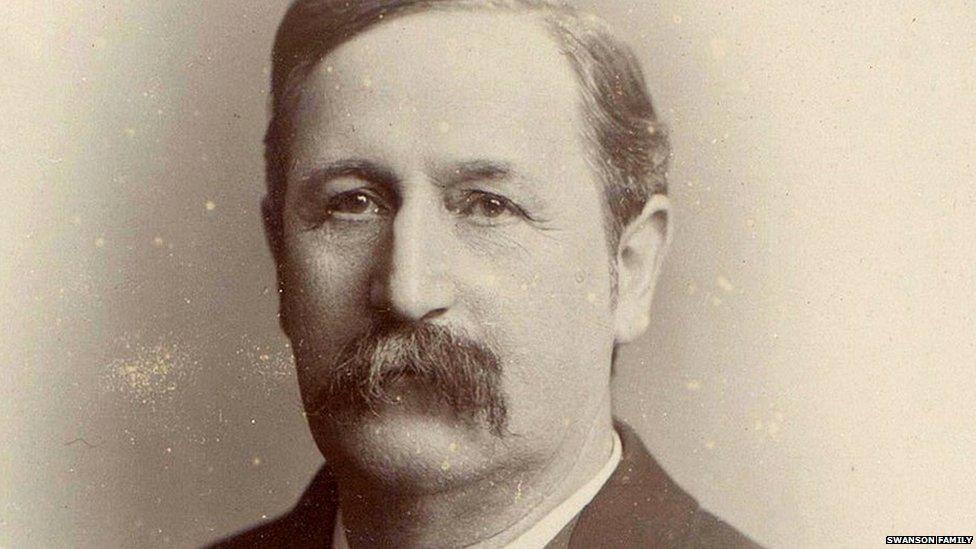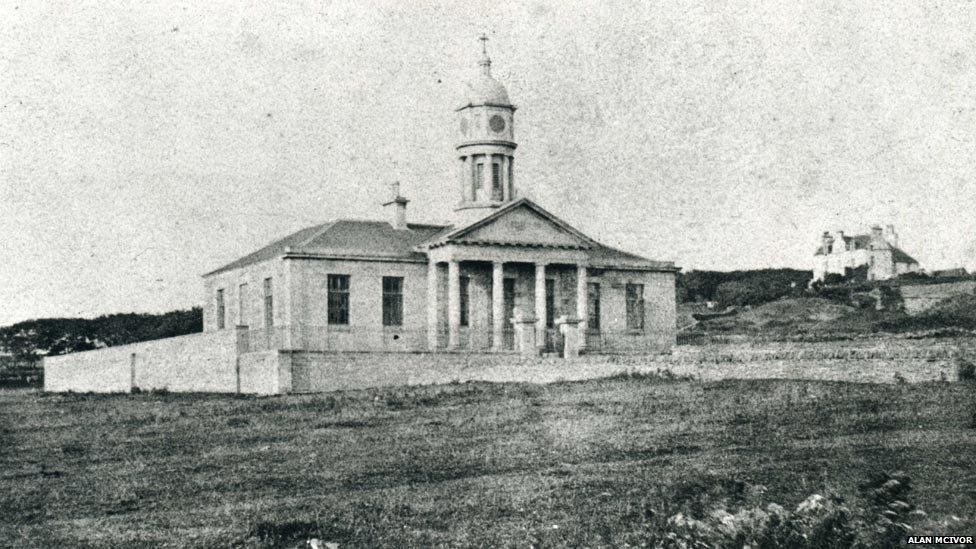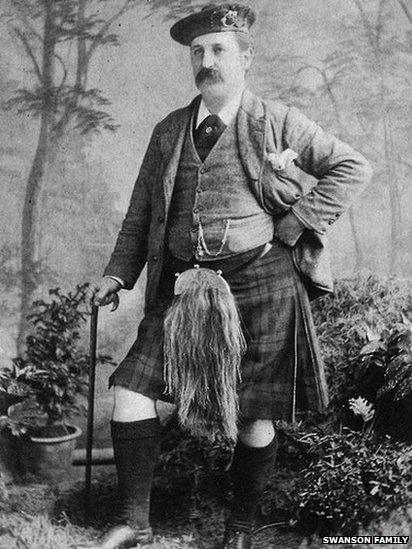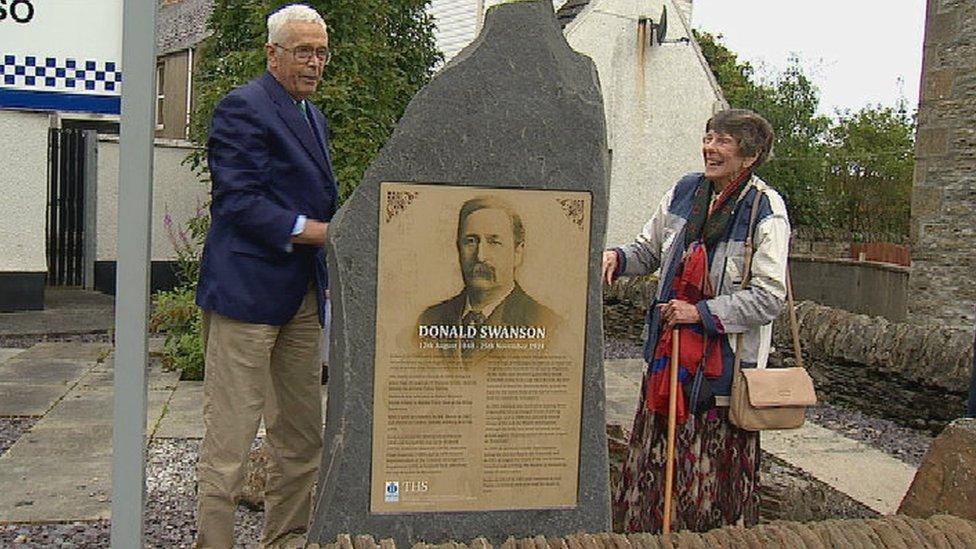True detective: The Scot who hunted Jack the Ripper
- Published
A memorial has been unveiled in a Scottish town in honour of a teacher-turned-police officer who investigated the murders of Jack the Ripper.
Donald Swanson was born at Geise, near Thurso, and went on to become one of Britain's best Victorian detectives.
Here, historian Alan McIvor, author Adam Wood, who is writing a book about Mr Swanson, and Mr Swanson's family reveal details of his early life and his work in tackling some of the 1800s most shocking crimes.

Donald Swanson was born at Geise Distillery, about two miles from Thurso, on 12 August 1848. He was the youngest child of brewer John Swanson and his wife Mary.
The distillery, which closed in 1851, is now long gone and ruined buildings now mark the spot.
Mr Swanson was still a boy when his family left Geise and moved to a home in Thurso's Durness Street.

He attended Robert Meikle's Parish School in Thurso's Market Place, before going to the Miller Institution.
After leaving school, Mr Swanson was a teacher for a time at the Miller Institution, which is today a public library.

In 1867, Mr Swanson left on a horse-drawn stagecoach with the aim of getting himself to London.
His 83-year-old granddaughter Mary Berkin said: "When you are 20 the world is your oyster and I suppose he thought 'if I get on that stagecoach I will get to London eventually and make my fortune'."
In 1868, the young man joined the Metropolitan Police.
Mr Swanson rose through the ranks and earned promotions to sergeant, detective inspector and detective chief inspector in 1888 - the year of Jack the Ripper's murder of five women in the Whitechapel area.

In 1896 he was made superintendent of the force's criminal investigation department.
During his long career in the police, Mr Swanson handled investigations into some of the worst crimes of the Victorian age.
He was involved in the arrest of murderer Percy Lefroy Mapleton in 1881.
Mapleton planned a robbery on a train from London to Brighton. He targeted a former stockbroker, killing the man by throwing him out of a carriage after unsuccessfully shooting at him with a revolver.
Mr Swanson was involved in two other major investigations that same year.
One led to the recovery of jewellery worth £250,000 stolen from a Lady Alice Bective.
Later, Mr Swanson found himself back in Scotland tasked with hunting down a gang of grave robbers who stole the body of an aristocrat and demanded a ransom for its return.
A stone cross still marks the spot where the Earl of Crawford's body was found unceremoniously buried in woods near Dunecht in Aberdeenshire.
In 1884, the detective helped in the hunt for those responsible for a prolonged bombing campaign, and four years later tackled his most gruesome case.
Jack the Ripper murdered five women in the Whitechapel area of London.
In private notes, Mr Swanson named "Kosminski" as the killer.
In more modern times, writers have named Polish-born Aaron Kosminski as a suspect.
Mr Kosminski, a hairdresser who arrived in England in 1882, had a history of mental illness.
He was allegedly spotted at the scene of the murder of Elizabeth Stride, believed to be the Ripper's third victim.
Mr Wood said: "According to Swanson's annotations, Kosminski was a prime suspect.
"He went insane and was committed to an asylum where he died shortly afterwards."
In 1903, the Scottish detective, who frequently returned to Thurso for holidays, retired on a pension of £280-a-year.
He died in Surrey on 24 November 1924 and was buried at Kingston cemetery.

Mr Swanson's police rattle was brought to the unveiling ceremony in Thurso by his family.
Rattles were carried by Metropolitan Police officers until the 1880s as a means of raising an alarm. Whistles replaced rattles because the sound from a whistle travelled further.

"The things that he and the other police at the time had to look at, probe at and find out about - I wonder how they could stomach that," said Mrs Berkin, who unveiled the new memorial outside Thurso Police Station earlier this week with the policeman's great grandson Nevill Swanson.
Historian Mr McIvor added: "He was something else. The career he had was incredible. The fact he came from Thurso is absolutely fantastic."